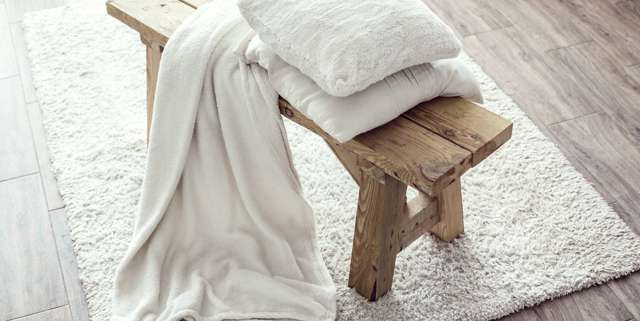
Carpet samples can be challenging to measure because the texture may make the product appear lighter or darker than it really is. Averaging your sample measurements can help you overcome this challenge. Image Source: Shutterstock user Alena Ozerova
Some textiles are more difficult to test for color consistency than others. A textile manufacturer can easily test a swatch of solid blue jersey fabric because the material is flat, opaque, and homogenous. For these types of smooth, solid textiles, all the manufacturer has to do is take one reading on a spectrophotometer to determine whether the dyed jersey fabric meets the manufacturer’s color standards. But not all textiles are homogenous in color; fabrics like corduroy, heavy knits, and terry cloth have texture variations that making them much more difficult to measure with a spectrophotometer. If the manufacturer measures the color of such fabrics in just one small area of the sample, there’s no guarantee that this measurement will match other measurements taken of the same fabric—move just one inch to the right of your first measurement and you’ll likely find that the color reading is completely different.
When testing for color consistency, how do manufacturers compensate for textured or non-homogenous products like this? One method is to average the color measurements in order to get an overall sense of the product’s color. By averaging your sample measurements, you’ll ensure that your color readings are as accurate as possible, even when working with materials that vary significantly in texture. However, in order to use this method properly, you’ll need to know when it’s appropriate to average your samples and when you should take only a single reading. After all, taking multiple measurements of the same sample can be a time-consuming process, so it’s important to only average measurements for the products that actually require this added level of attention.

Averaging your measurements can help you get an accurate color reading on products like toothpaste, especially those that contain flecks of colorful suspended particles. Image Source: Shutterstock user kikovic



